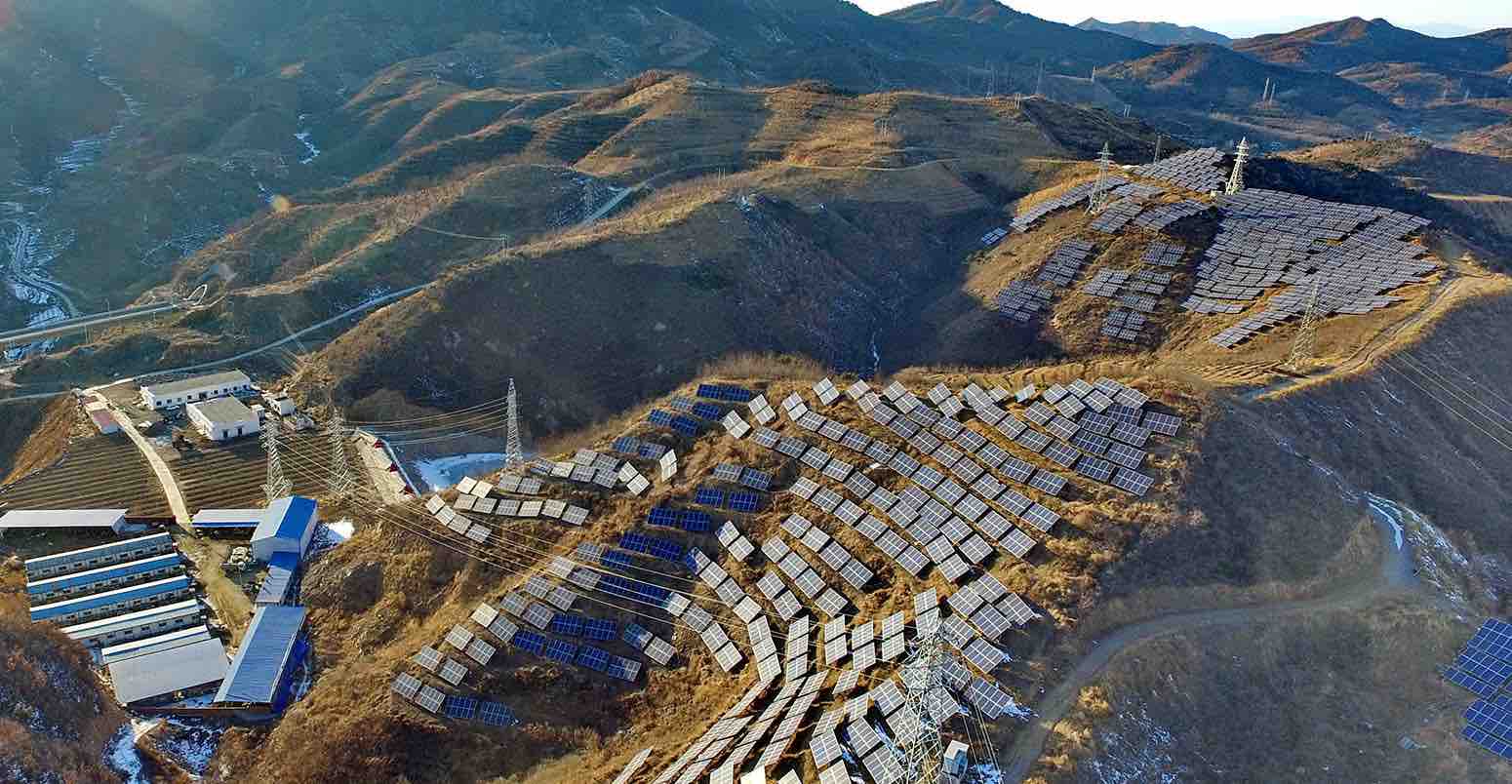Emerging markets now account for the majority of growth in solar power, according to new data from Bloomberg New Energy Finance (BNEF).
Led by China and India, these developing economies are behind dramatic recent growth in solar capacity, which expanded by 33% in 2016.
China alone installed 27 gigawatts (GW), around 40% of the world’s new solar last year. Brazil, Chile, Jordan, Mexico and Pakistan all at least doubled their solar capacity in 2016.
In total, solar accounted for 19% of all new generating capacity in the emerging markets tracked by BNEF.
However, solar still only accounts for 5% of capacity and 1.3% of electricity generationglobally. But its exponential growth in recent years has been driven by national policies and a combination of photovoltaic module prices falling more than threefold.
Exponential growth
Over the past decade, solar capacity has increased exponentially, driven by falling module prices and national commitments to reduce greenhouse gas emissions or expand access to electricity.
While Europe, the US and Japan led the way in early solar installations, over the past few years most growth has been driven by developing countries, with China in particular starting to dominate the solar sector.
The figure below shows total global solar capacity installed each year from 2003 through to 2016 by region.

Europe drove much of the early solar capacity growth – and cost reductions. In 2016, however, Asia became the dominant region. North America has also ramped up its solar capacity considerably. While still relatively small, solar capacity in Africa and South and Central America also experienced rapid year-over-year growth from 2013 onwards.
Mapping solar use and new installations
Carbon Brief combined the new Climatescope BNEF data for emerging markets with data from the BP Statistical Review of World Energy, to show the growth of solar over recent years in a wider range of countries.
Total solar capacity, shown in the bar charts below, are dominated by high-population countries, such as China and the US. China alone accounts for 26% of the world’s solar installations, with Japan, Germany and the US each accounting for around 13%. The UK has the sixth largest installed solar capacity of any country, larger than India, France, Spain and Australia.

In 2016, China added around 27GW of total solar capacity, more than any other country and about 40% of all solar capacity installed globally that year. The US was the second largest, at around 15GW. India was the fourth largest source of new solar capacity, installing more than 4GW in 2016. The UK installed around 2GW in 2016.
To normalise by a country’s population, the map below shows the total amount of solar power capacity per-capita. A per-capita metric allows comparisons across countries without large population countries overshadowing rapid changes elsewhere.

Germany has the largest installed solar capacity per person, at nearly 500 watts per person. It is followed by Japan at 337 watts, Italy at 318 watts, Belgium at 302 watts, Greece at 243 watts and Australia at 228 watts. Other European countries round out the top 11, with the UK at number 9 with 179 watts. The US has the 12th largest installed solar capacity per person at 125 watts, while China is the 24th largest at 56 watts solar per person.
While European countries have some of the highest solar capacities per person, their growth has slowed in recent years. The map below, which shows new solar installed in 2016 per-capita, paints a somewhat different picture.

In 2016, Japan had the most new solar installed per person, at 68 watts. The US was near the top at 46 watts, while the UK and Australia had 31 watts. China installed more solar per-person than Germany in 2016, which has capped the rate of renewable additions and moved to auctions for new capacity.
While per-capita installations across Africa are relatively low, the region’s growth is still noteworthy. According to BNEF, more than 1.5m households in Africa now use solar home systems, with mobile-money enabled financing plans resulting in a nearly 300% increase in cumulative installations relative to 2015.
Conclusion
While Europe, Japan, Australia and the US drove early installations of solar power, in recent years developing countries led by China have taken the lead and now account for more than half of new solar installations globally.
Solar power accounts for only 5% of capacity and 1.3% of electricity generation globally today, but is growing rapidly. Solar is widely expected to continue its rapid growth as prices continue to fall and climate policies and national solar targets drive adoption at scale.
The International Energy Agency suggests that by between 2020 and 2025 solar will be cheaper than coal in the US, India and China. However, there are still challenges associated with variable generation and the need for flexible backup or battery storage, which will become increasingly important as solar contributes a larger share of the electricity mix.
Source: Carbon Brief. Reproduced with permission.







